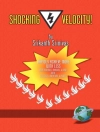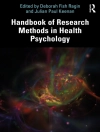Shred through Social Confusion!
The world around us is a complicated place filled with expectations, rules, assumptions, guidelines, regulations, and policies. This “hidden curriculum” exists across environments, places, people, and cultures. Although rules and mandates can be complex, most of us take comfort in them—often unconsciously—because they help us to know what to do in everyday situations. We like rules if they are consistent. It is when they are unclear, or are unstated that we can become upset, indignant, or confused. Some people learn the hidden curriculum and its impact automatically. Others learn the hidden curriculum only by direct instruction. That is the purpose of this book.
In this third edition, the essential features of the original book have been maintained and information on evidence-based practices has been added. In addition, it provides a series of instructional strategies that can be used to teach the hidden curriculum. Instructional aids include charts, forms, and templates designed to make the job of teaching and learning the hidden curriculum more effective.
Finally, The Hidden Curriculum offers extensive lists of hidden curriculum items or unstated guidelines. Due to the elusive nature of the hidden curriculum, the lists—while broad—offer examples rather than a definite set of lessons to be learned. Parents, educators, support persons, and others are encouraged to consider the lists as springboards to make their own lists geared specifically toward the unique needs of the individuals with whom they work or live.
Cuprins
Introduction
Chapter One: Overview of the Hidden Curriculum
The Elusiveness of the Hidden Curriculum
The Hidden Curriculum Differs Across Age
The Hidden Curriculum Differs Depending on Who You Are With
The Hidden Curriculum Differs Across Cultures
The Hidden Curriculum and Prediction
The Hidden Curriculum and Context
The Hidden Curriculum and Regulation
The Hidden Curriculum and Self-Empowerment
The Hidden Curriculum and Self Sabotaging
Chapter Two: The Hidden Curriculum Across Environments
School
Home
Community
Workplace
Legal System
Personal Hidden Curriculum
Chapter Three: Teaching the Hidden Curriculum
A Trusted Support Person
Embedding Context and Prediction
One Item a Day
Seek-Observe-Listen-Vocalize-Educate
Social Narratives
Cartooning
Social Autopsies
Video Modeling
Video Self-Modeling
Video Instruction
Practice Makes Perfect
Empower the Autistic Individual to Seek Help
Embedding the Hidden Curriculum
Staying in the Game
The Comprehensive Autism Planning System (CAPS)
Chapter Four: Hidden Curriculum Items
Despre autor
Ronda L. Schelvan, MS, has worked for more than 30 years in the field of special education, including extensive experience working/supporting students and families with special needs. She has presented and consulted nationally and internationally. In addition to serving as co-chair of Southwest Washington’s Autism Consulting Cadre for 10 years, Ronda collaborated on the Autism Guidebook for Washington State. She has served as past president of the Southwest Washington Chapter of the Autism Society of Washington. Ronda also teaches classes and serves as a mentor for the Autism Outreach Project of Washington. Currently, she teaches for the Evergreen School District in Vancouver, Washington.












